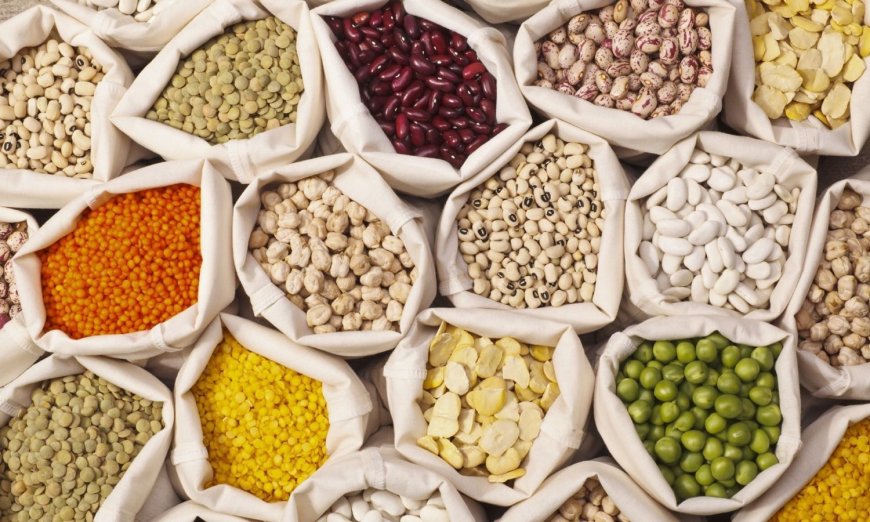Wealth Creation: Pulses Market Targeting USD 122.9 Billion by 2033
The projections for pulses remain bullish, with a new analysis by Future Market Insights estimating 4.9% CAGR through 2033.

FMI finds the overall demand for pulses around the world growing at a promising 4.9% annually which is anticipated to continue till 2033. The global pulses market valuation is projected to reach US$ 122,891.9 million by the end of the year 2033.
Governments are providing financial assistance and other incentives to improve pulse output because they are a staple crop in many underdeveloped countries. In recent years, countries have launched a number of food initiatives focused at increasing pulse output.
Unlock Growth Potential in Your Industry – Get Your Sample Report Now! https://www.futuremarketinsights.com/reports/sample/rep-gb-12667
Growing urbanisation, higher disposable incomes, and a strong desire for nutritious ready-to-eat and processed meals are driving growth. Furthermore, the concentration of a huge population base in India and China is increasing demand for nutritious food, leading to an increase in overall pulse production.
Pulses help to lower cholesterol and triglyceride levels in the human body. As a result, they are frequently consumed worldwide. In the short term, the coronavirus pandemic was predicted to create a minor delay. Despite a little slowdown caused by COVID-19, economic expectations remain generally optimistic.
As concerns over excessive meat consumption on human health dawn on consumers, they are seeking healthier alternatives. Resultantly, the market for pulses is witnessing a notable upsurge nowadays. Furthermore, the trend of healthy eating has augmented, with consumers hoping to strengthen their immunity by eating fiber, nutrient, and vitamin-rich foodstuffs. Therefore, growth prospects of the global pulses market appear largely optimistic throughout the 2020-2030 assessment period.
Key Takeaways from the Pulses Market Study Report
- The United States pulses market is projected to grow at an annual rate of 3.7% over the next ten years. By following this growth rate it is expected to reach an overall valuation of US$ 4,473.2 million by the end of the year 2033.
- In the European region, Germany is the leading region for business in pulses that is projected to grow at a 2.7% rate throw 2033. Meanwhile, the United Kingdom and Spain are expected to witness a higher rate of 3.1% and 4.1% respectively, over these years.
- On the other hand, China is a very lucrative region nowadays for sales of pulses, which may register a CAGR of 6.4% until 2033.
- Based on different forms of pulses, the pulse flour segment holds a higher potential for growth in the coming days. This segment is further projected to progress at an annual rate of 4% during the forecast years.
- High consumption of pulses is likely to be in the whole form, given the higher need for good quality nutrition in countries suffering from severe hunger and malnutrition. This is largely expected to occur throughout the Middle East and Africa.
Landscape for the Pulses Market
Nestle SA, Groupe Danone, Reckitt Benckiser Group Plc (RB), Abbott Laboratories Inc., Vitasoy International Holdings Ltd, Inner Mongolia Yili Industrial Group Co Ltd., Coca-Cola Co, General Mills Inc., Blue Diamond Growers, Kikkoman Corporation, Dr. Schär AG/SpA, Lactalis Groupe, Valio Oy, Post Holdings Inc., and Monde Nissin Corp. among others are some of the major players in the global pulses market.
Market players can face stiff competition from alternative protein sources such as soybeans, hemp, flax, nuts, and oilseed. In most countries, the price of pulses is also phenomenally high limiting their consumption, particularly in developing economies.
This is generally attributed to the presence of interim entities who seek to profit from the pulses trade and commerce. However, nowadays, consumers rely on platforms such as Big Basket, Amazon, and Grofers to purchase pulses. Moreover, growth is largely being sustained by e-commerce channels, despite the significant presence of conventional retail outlets.












